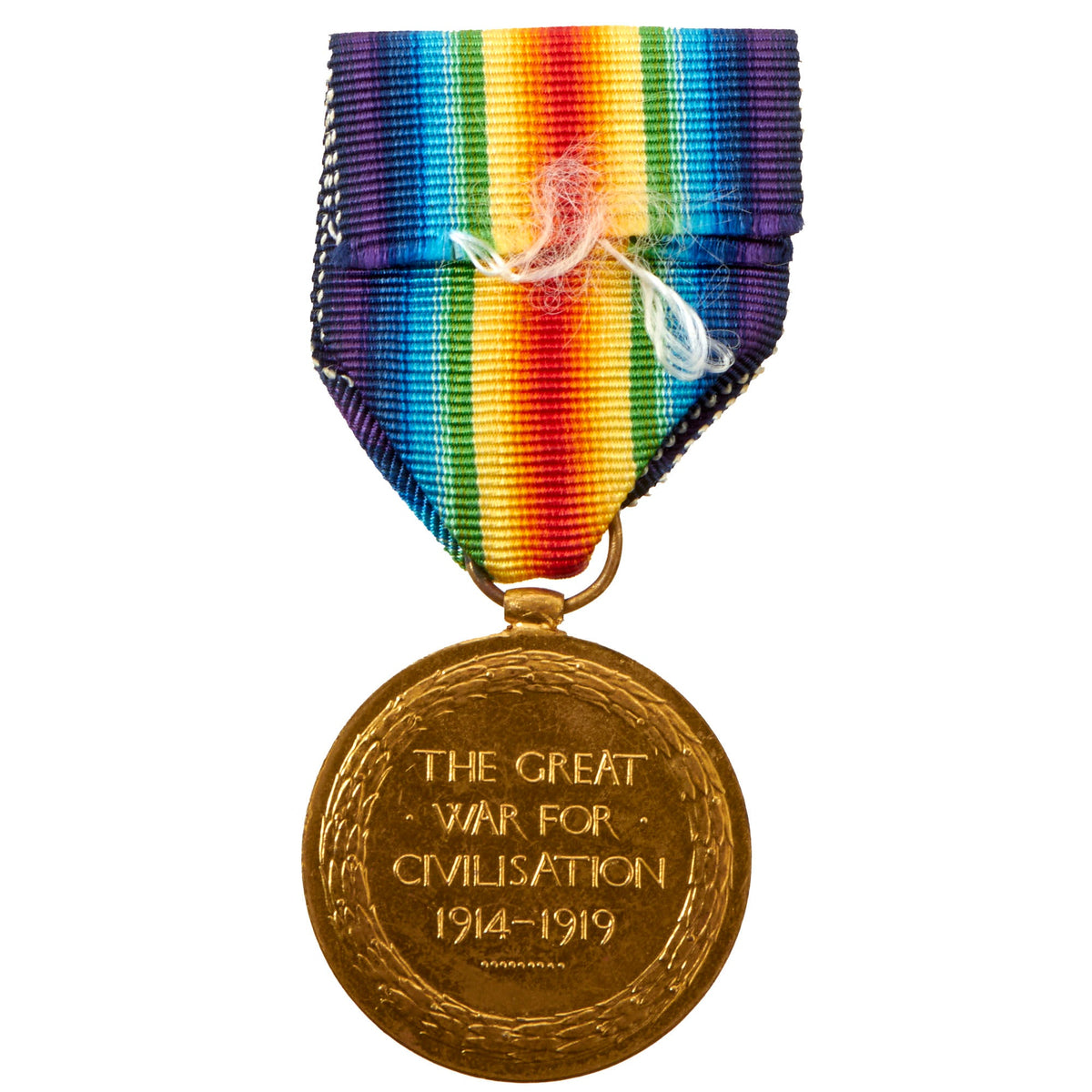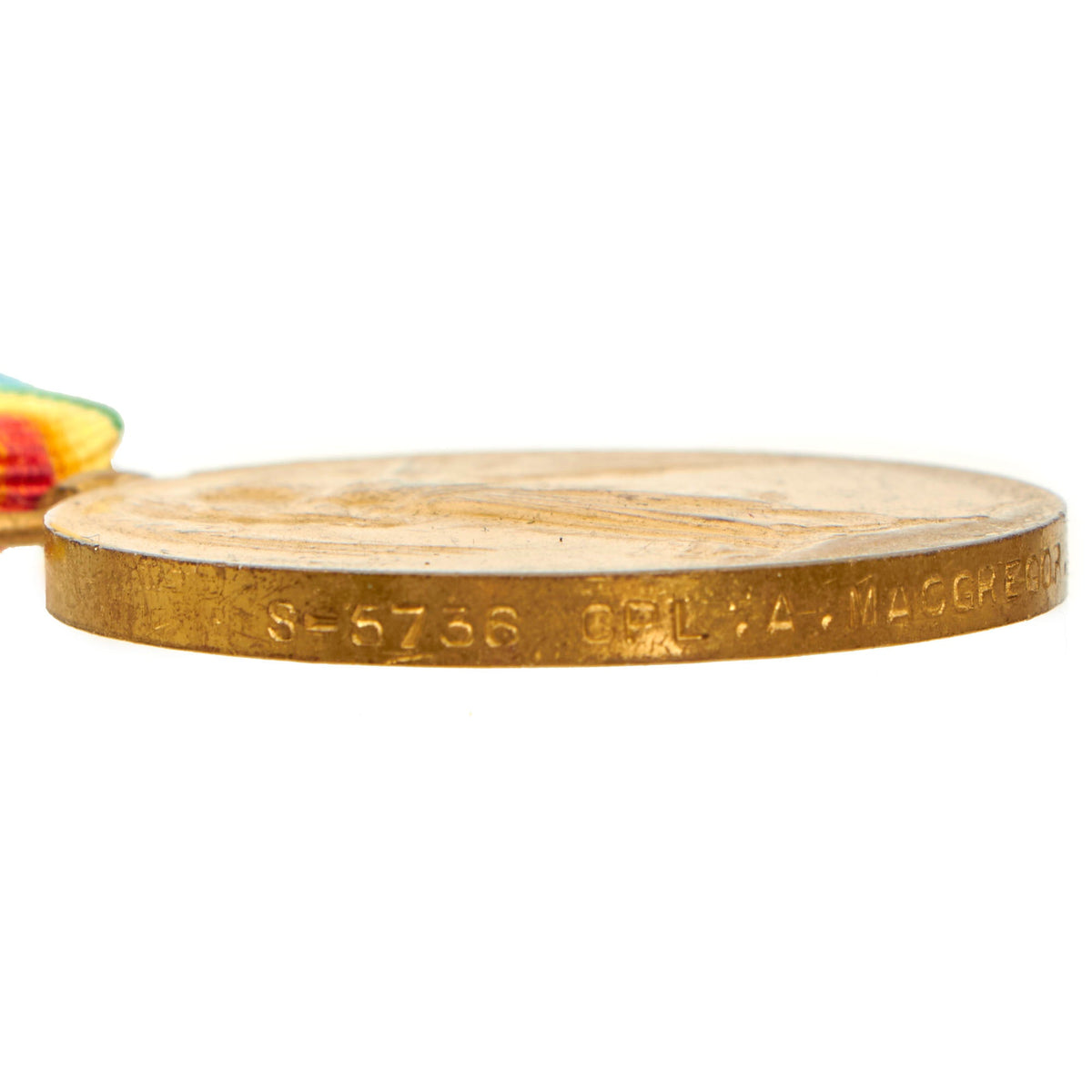Original British WWI Victory Medal Named to Soldier Killed in Action at Battle of Arras – Seaforth Highlanders Original Items
$ 195,00 $ 78,00
Original Item. One-of-a-Kind. This is the WWI Victory Medal of Corporal Alexander MacGregor, 2nd Battalion, Seaforth Highlanders, who was killed in action on April 11th, 1917 during the Battle of Arras.
The medal is engraved on the rim: S-5736 CPL. A. MACGREGOR. SEA. HIGHRS.
The medal is in great shape with its original ribbon still retained. There is still much research to be conducted on MacGregor’s service. The medal comes with a page of research with some basic information. Comes ready for further research and display!
The Battle of Arras
The Battle of Arras (also known as the Second Battle of Arras) was a British offensive on the Western Front during the First World War. From 9 April to 16 May 1917, British troops attacked German defenses near the French city of Arras on the Western Front. The British achieved the longest advance since trench warfare had begun, surpassing the record set by the French Sixth Army on 1 July 1916. The British advance slowed in the next few days and the German defense recovered. The battle became a costly stalemate for both sides and by the end of the battle, the British Third Army and the First Army had suffered about 160,000 casualties and the German 6th Army about 125,000.
For much of the war, the opposing armies on the Western Front were at stalemate, with a continuous line of trenches from the Belgian coast to the Swiss border. The Allied objective from early 1915 was to break through the German defenses into the open ground beyond and engage the numerically inferior German Army (Westheer) in a war of movement. The British attack at Arras was part of the Anglo-French Nivelle Offensive, the main part of which was the Second Battle of the Aisne 50 mi (80 km) to the south. The aim of the French offensive was to break through the German defenses in forty-eight hours. At Arras the Canadians were to capture Vimy Ridge, dominating the Douai Plain to the east, advance towards Cambrai and divert German reserves from the French front.
The British effort was an assault on a relatively broad front between Vimy in the north-west and Bullecourt to the south-east. After a long preparatory bombardment, the Canadian Corps of the First Army in the north fought the Battle of Vimy Ridge, capturing the ridge. The Third Army in the center advanced astride the Scarpe River and in the south, the Fifth Army attacked the Hindenburg Line (Siegfriedstellung) but made few gains. The British armies then conducted smaller attacks to consolidate the new positions. Although these battles were generally successful in achieving limited aims, they came at considerable cost.
Fast Shipping with Professional Packaging
Thanks to our longstanding association with UPS FedEx DHL, and other major international carriers, we are able to provide a range of shipping options. Our warehouse staff is expertly trained and will wrap your products according to our exact and precise specifications. Prior to shipping, your goods will be thoroughly examined and securely secured. We ship to thousands clients each day across multiple countries. This shows how we're dedicated to be the largest retailer on the internet. Warehouses and distribution centres can be located throughout Europe as well as the USA.
Note: Orders with more than one item will be assigned a processing date depending on the item.
Before shipping before shipping, we'll conduct a thorough inspection of the items you have ordered. Today, the majority of orders will be delivered within 48 hours. The delivery time will be between 3-7 days.
Returns
The stock is dynamic and we cannot completely manage it because multiple stakeholders are involved, including our factory and warehouse. So the actual stock may alter at any time. It's possible that you may not receive your order once the order has been made.
Our policy is valid for a period of 30 days. If you don't receive the product within 30 days, we are not able to issue a refund or an exchange.
You can only return an item if it is unused and in the same state as the day you received it. You must have the item in its original packaging.
Related products
Uncategorized
Uncategorized
Uncategorized
Uncategorized
Uncategorized
Uncategorized
Uncategorized
Uncategorized
Uncategorized
Uncategorized
Uncategorized
Armored Burgonet Helmet & Polearm from Scottish Castle Leith Hall Circa 1700 Original Items
Uncategorized
Uncategorized
Uncategorized
Australian WWII Owen MK1 Machine Carbine SMG Custom Fabricated Replica with Sling Original Items
Uncategorized
Uncategorized
Band of Brothers ORIGINAL GERMAN WWII Le. F.H. 18 10.5cm ARTILLERY PIECE Original Items
Uncategorized













































































